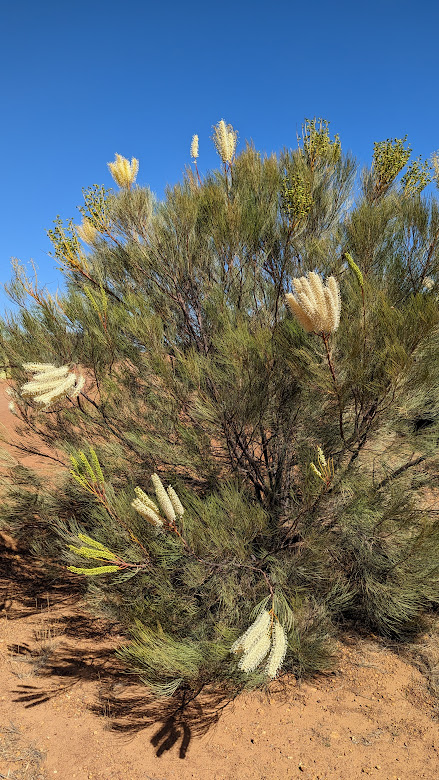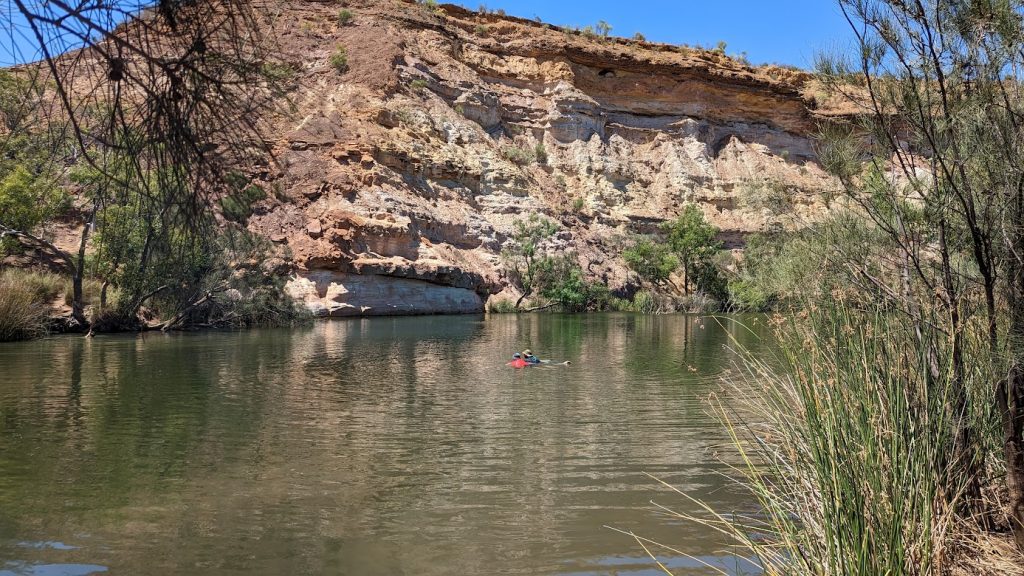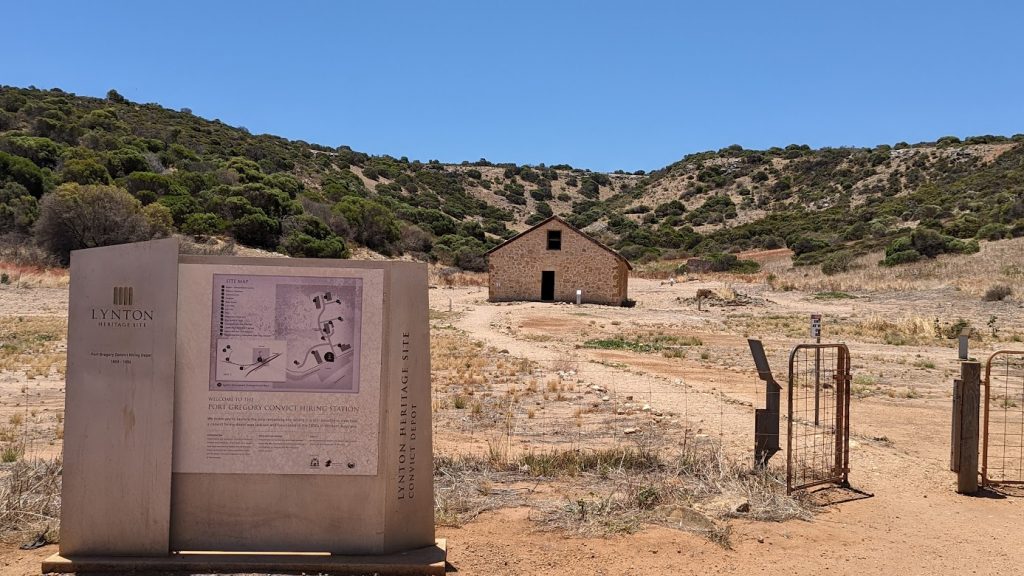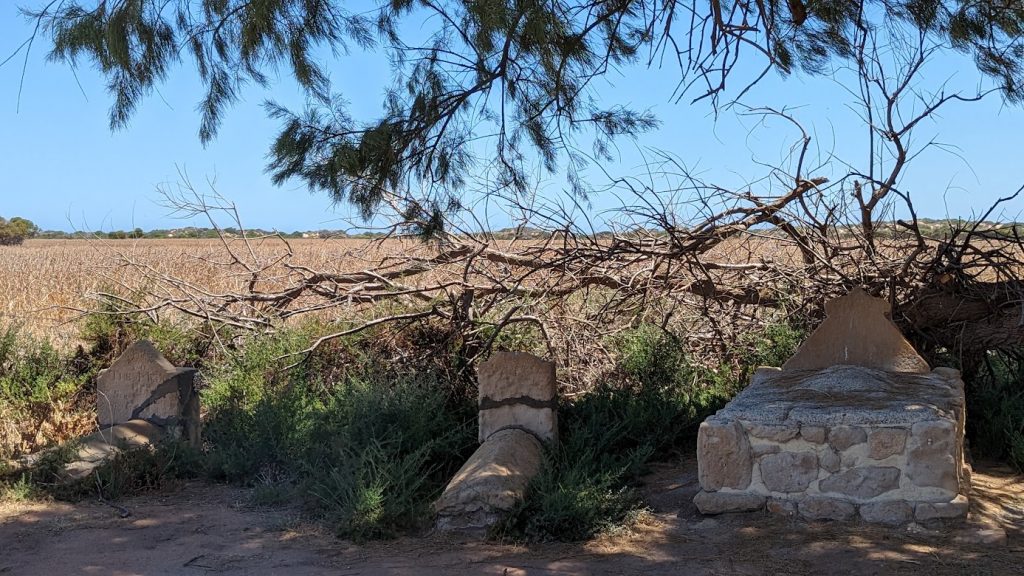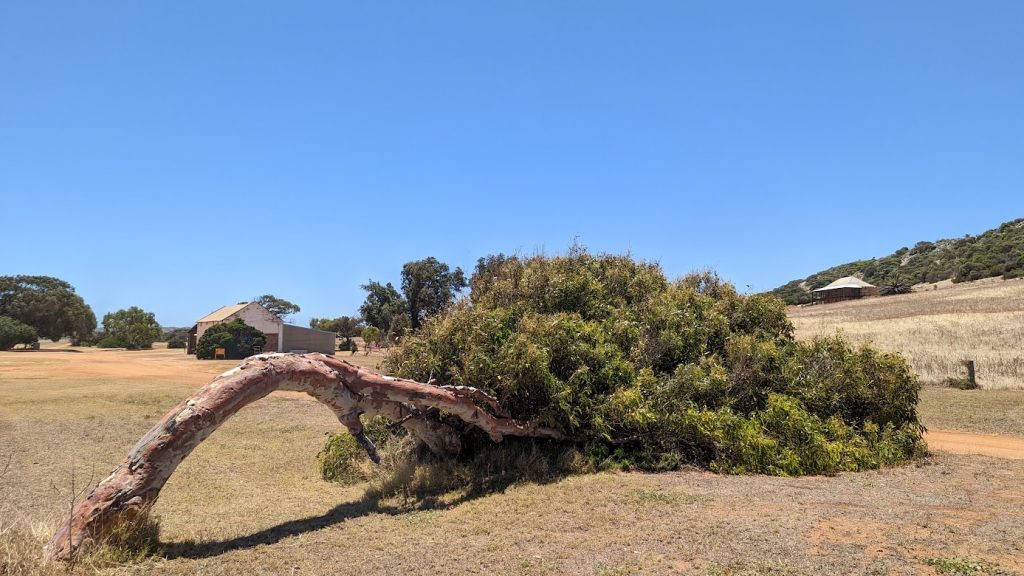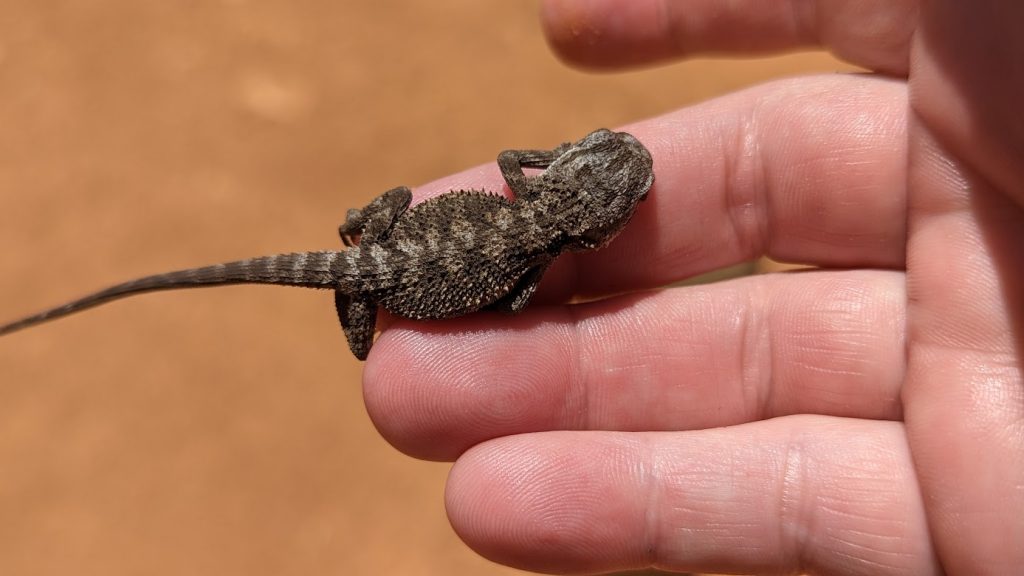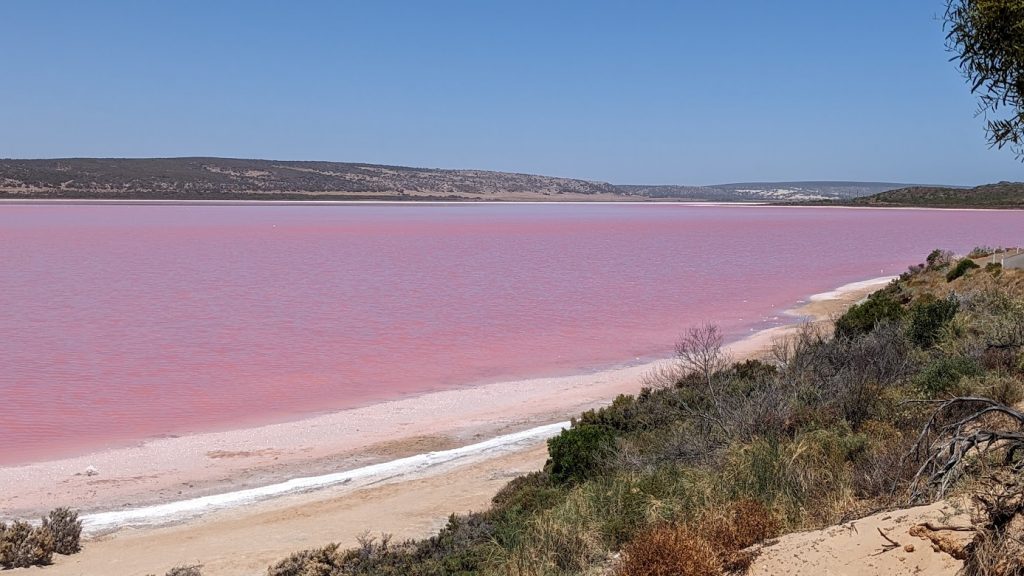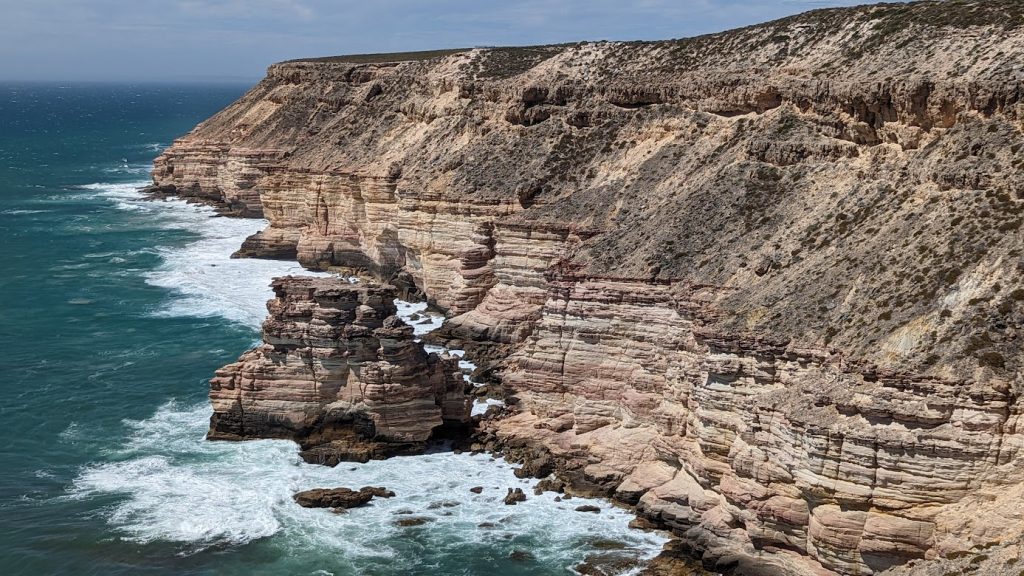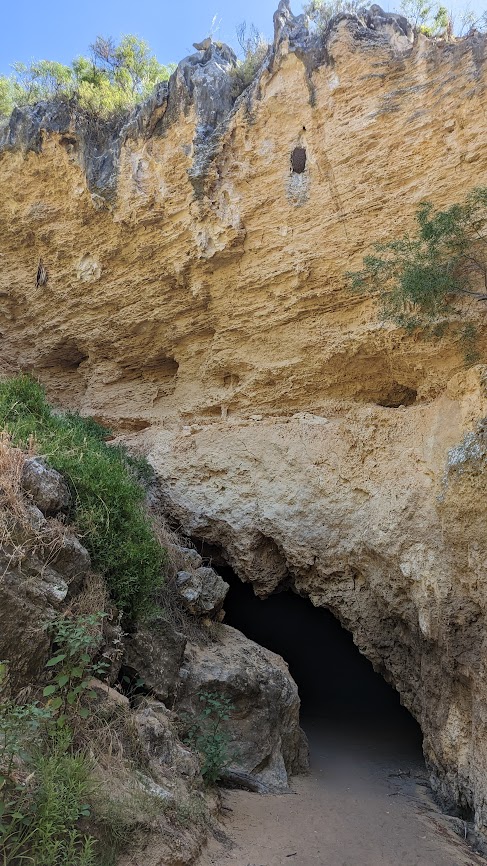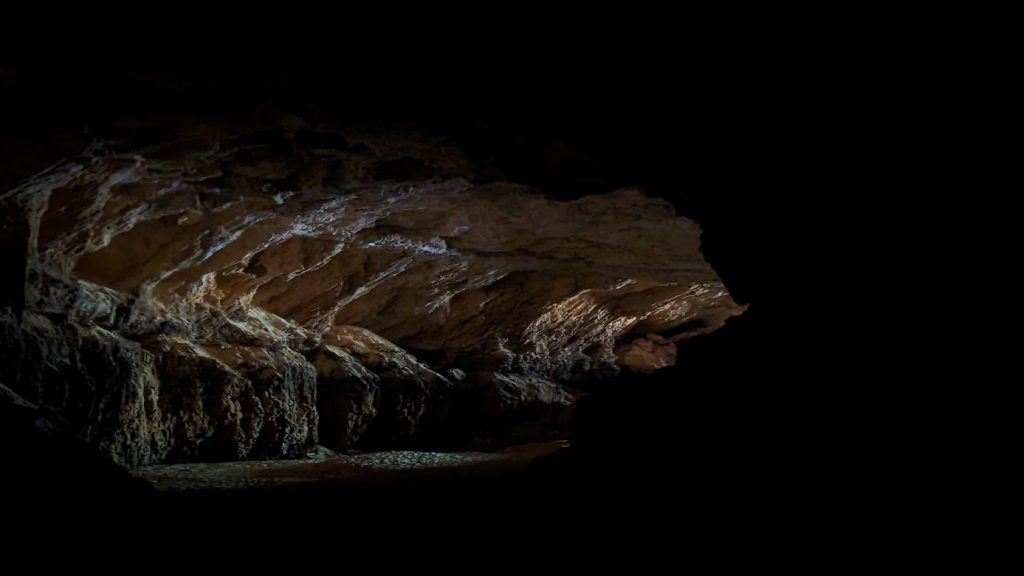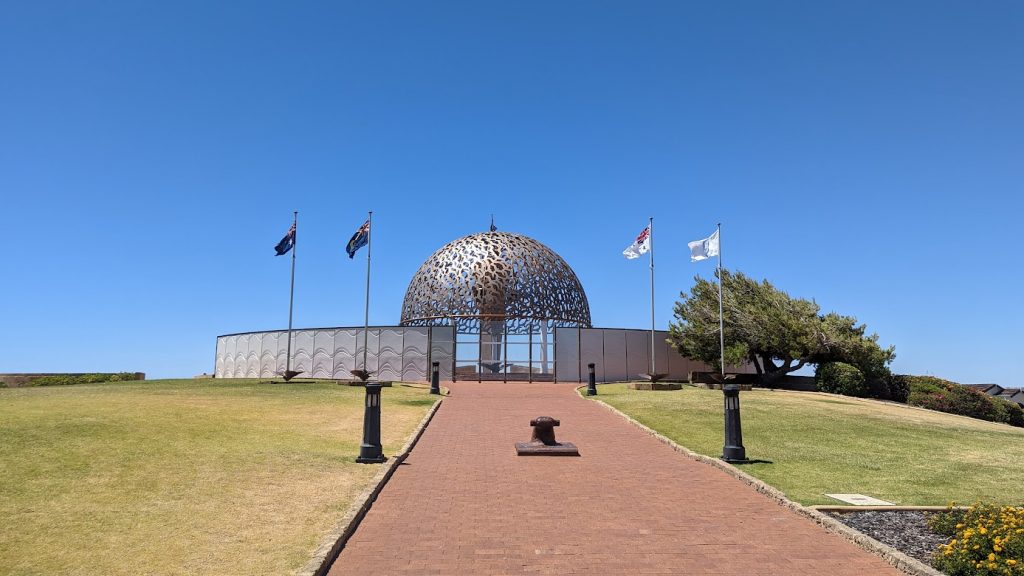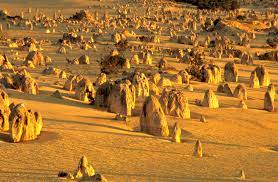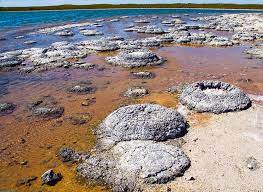Mines and monks
- From Geraldton we headed inland from the coast.
Our first stop was Jingemia Cave,a collapsed doline, which proved useful as first a guano quarry and then a mineral repository for the early European settlers. The Aboriginal folk of the area called it “Devil’s Abode” but it was a unique area for the collection of chert, a mineral used in making indigenous tools, and the local mobs mined and used it. I’ve been to this location a few times and I’ve never been able to find any indication of tool making in the immediate vicinity so I can only assume they collected the material and processed it elsewhere. I’ve seen chert tools in areas south so it was probable that the raw material or the formed tools were traded from this spot.

From here we travelled onto New Norcia. New Norcia is Australia’s only monastic town and has a unique heritage. Founded in 1847 by Spanish Benedictine Monks, the town has had many purposes; a mission, a monastery, a provider of education and now as a place of spiritual retreat. You can drive around the grounds and get out to explore the beautiful heritage buildings. We did a lap of the buildings and then a guided tour from the Visitor’s Centre.
Sadly, New Norcia was our last stop on the tour. From here we headed to the airport and bid our guests a sad goodbye, while hoping we see them again on another tour.





